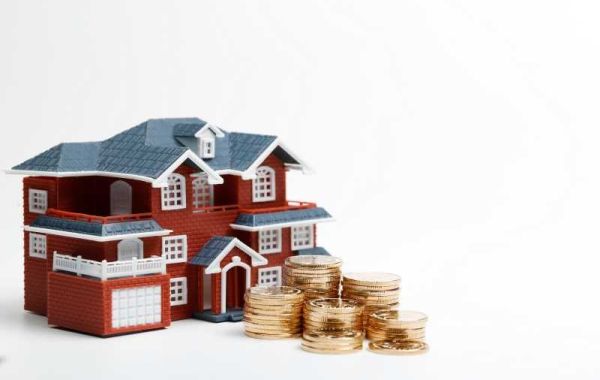This type of loan helps you buy a new property with the help of the Government, and has been so popular that the application period has been prolonged until March 2023. If you already have a mortgage and still have some improvements to make around the house, you can apply for a remortgage for home improvements.
What Is a Help to Buy Mortgage?
Home buyers in England can buy homes of up to 20% (40% in London) with a 5% deposit through the Help to Buy Home Scheme. The Help to Buy scheme provides equity loans for first-time buyers of a newly built home in England. These loans are free of interest for the first five years and will close in March 2023.
This can only be used for buying the main house, and not for a second house or buy to let properties. You will need at least 5% of the purchase price as a deposit. The government will give you up to 40% of the purchase price, which will not have any interest for five years. This can be anywhere from 20% to 40% depending on the area. The property must be newly-built and sold by a registered builder. It must be the only place you own and live in, and you must be the first person to live within that property.
To get help to buy mortgages, you need at least 5% of the total cost of your new-build house as a deposit. The government will lend you up to 20% (or 40% if you live in London) of the sale price up to a regional limit. You can borrow the rest from mortgage lenders, on a repayment schedule. Your equity loan will have to be paid off by the end 25 years or when you sell your home, whichever comes first.
The property price caps for which you can apply are the following:
London: £600,000
South East: £437,600
East of England: £407,400
South West: £349,000
East Midlands: £261,900
West Midlands: £255,600
Yorkshire and the Humber: £228,100
North West: £224,400
North East: £186,100
Advantages And Disadvantages of Help to Buy Mortgages
There are major benefits to getting help to buy mortgages, the most important being:
- The government equity loan boosts your deposit, making it easier to get the mortgage
- Since you take a mortgage on a part of the property value, your rates get better
- If the property drops in value you have to pay back less, since the loan is not a fixed amount
- The mortgage is with zero interest for five years
Before you dive in and apply for a mortgage, be sure to take into account the disadvantages it may imply:
- Inflation makes properties' value increase very little
- If the property grows in value you have to pay back more
- Can be hard to get a remortgage
- Only valid for new homes
- After five years, the interest starts rising constantly
- You can get to negative equity if the house price drops
Maybe a new house is not for you, and you already have a mortgage on your current one. You can turn your current house into a paradise by applying for a remortgage for home improvements and extensions.
Remortgage for Home Improvements
Want to live in the house of your dreams? Renovations can be an inexpensive alternative to moving. They are also good for improving your home. Though renovations may not be inexpensive, they are a good investment. One of the best ways to extend your house or renovate it, is by applying for a remortgage for home improvements. When it comes to remortgaging your home for home improvements, there are a few things to keep in mind. Here are four different types of home improvements you can remortgage for:
- Renovations: A renovation is a major improvement to your home that can include anything from new flooring and paint to complete kitchen or bathroom renovations. Because of the large investment involved, renovations are typically considered a permanent improvement and can be remortgaged for up to 100% of your original loan amount.
- Home Additions: Adding extra space to your home with an addition such as a garage, loft, or studio can also be remortgaged for up to 100% of your original loan amount. The added value of your home will help you get a higher interest rate on the loan, so don’t worry if this type of improvement isn’t quite in line with your lifestyle yet.
- Home Repair and Maintenance: Updating or repairing parts of your home that are currently in need of attention can also be remortgaged for up to 100% of your original loan amount. This includes things like fixing leaky roofs, replacing rotted or broken wooden beams, and updating outdated HVAC systems.
- Home Downgrades: Occasionally, a home may need to be downgraded in order to qualify for a lower interest rate on a remortgage. For example, if your home is in a less desirable neighborhood or if the construction quality is below average, you may be able to get a lower interest rate by downgrading your home.
Consider These Aspects Before Getting Remortgage for Home Improvements
- The equity that you have in your home. The larger your housing equity, the more likely you are to be able to borrow money based on it. There are many reasons as to why you may want or need new funding. Your mortgage advisers are always available to help you find the best solution for your needs.
- Your home's value growth. Typically, mortgage lenders allow you to borrow up to 80-85% of your home’s value, but if you can provide enough equity, they may approve you for up to 90%.
- How much home improvements could cost. Your lender will need to know the total cost of your renovation in order to give you an estimate for how much you can borrow.
- Affordability. The question of how much the borrower can afford is the first question that banks ask. Larger monthly payments come with a higher interest, so calculate your mortgage and living expenses to ensure that you have enough savings for your renovations.
- Financial Situation. If you have a poor credit history, there might be limits to how much you can borrow. This is because lenders may not want to take on more risk. Relax, though - your mortgage adviser can help choose the right loan for you and also advise about this. Still, it's important to not borrow more than you can afford.
- Personal circumstances led to the remortgage. Various personal decisions and factors can affect the amount of financing you receive for a mortgage. For example, if your bank thinks that you're going to retire soon, they will decrease the amount because you'll be able to spend less money.
Whether you pursue your dream home by applying for help to buy mortgages, or you already found your dream home and just need to add a finishing touch, it is important to talk to your mortgage advisor to see whether a remortgage for home improvements or another type of loan is suitable for you.










